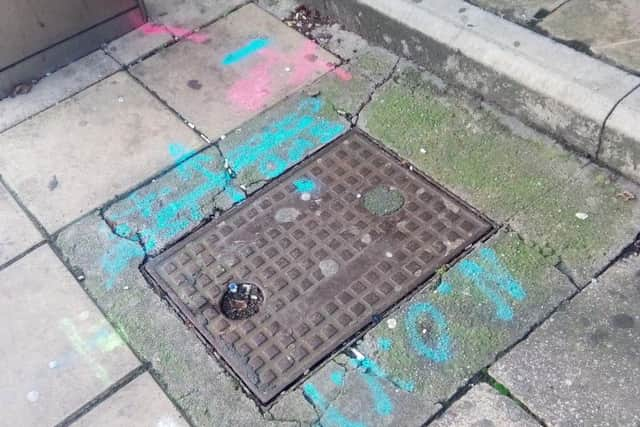What do all the weird, coloured lines appearing on Sheffield's streets mean?


If you've wandered the area around Arundel Gate and Flat Street over the last few days, you can't have failed to notice a string of colourful markings and messages on the pavements.
But rather than the latest creation by acclaimed graffiti artist Banksy, here's what all those weird and wonderful coloured blobs mean.
Advertisement
Hide AdAdvertisement
Hide AdThe dots, arrows and codes are all aimed at helping to inform a string of different workers when roadworks or other repairs are taking place.


The painted codes tell workers what's beneath the surface - and the colours and letters all mean different things and help workers avoid potentially dangerous mistakes, pointing them in the direction of pipes and cables.
Here's what they all mean
Red
Red pavement paint denotes electricity and red lines show where electricity cables run.


The numbers next to these red lines spell out either the distance to the kerb or the depth below ground (usually followed by a "d") while the letters L/V means "low voltage", H/V "high voltage" and S/L "street light service".
White
Advertisement
Hide AdAdvertisement
Hide AdWhite markings give advice on measurements and instructions about what road markings should go where and is the general colour between contractors.
When a road is resurfaced, for example, all the previous white or yellow markings in the street disappear. But the previous locations of these carriageway markings - whether they denote bus stop or keep clear zig-zag lines - will be noted in white on pavements to the side.
Blue
Blue denotes water pipes so utility firms can figure out exactly what lies beneath the surface before works are carried out.
Yellow
Yellow paint markings relate to gas pipes and gas lines.
Common markings are LP- which refers to low pressure or MP and HP which refer to medium and high pressure respectively.
Advertisement
Hide AdAdvertisement
Hide AdThe information can also include depths and lengths of pipes.
Green
Green is the colour of cable communications, which includes town and city CCTV networks and cable television lines.
The number of ducts are represented as dots within circles.
Other colours
Some local authorities use orange for their markings,while some use other colours such as mauve.
All of the colours listed above are based entirely on convention - but none of it is enshrined in law and the colours and markings can vary from region to region.